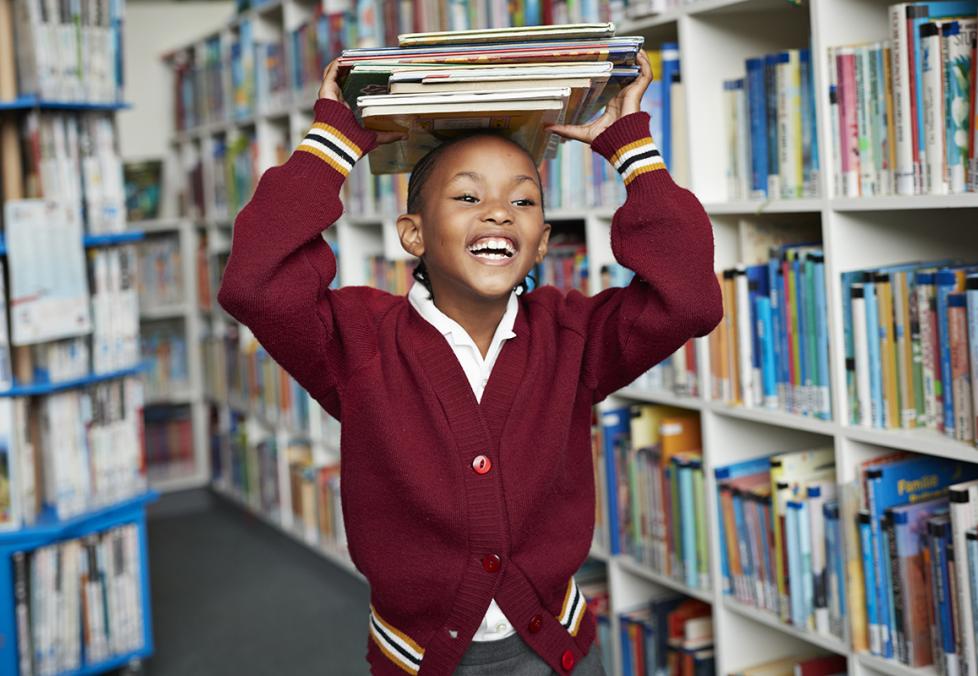
Two pairs and a free, quality eye exam for just $79.95
Everything you need to know to take care of your eyes — for life.

Your child can’t stop rubbing their eyes and has to squint to see the smartboard. So you probably won’t be surprised when the pediatrician or school nurse tells you your child may have myopia — trouble seeing things at a distance.
Myopia (also known as nearsightedness) is a common eye condition that usually develops in childhood. In a study published in the journal Clinical Ophthalmology, nearly 19% of children ages 8 to 10 had myopia and more than 30% of children ages 11 to 14.
It’s also been on the rise among adolescents. A 2021 study published in the journal JAMA Ophthalmology found that myopia rates increased during the COVID-19 pandemic — children spent more time staring at screens and using digital devices. Some studies suggest that close-up indoor activities, such as looking at a computer, may contribute to myopia, although this is still a theory.
The good news is that nearsightedness can be easily corrected by an optometrist. And believe it or not, glasses aren’t your child’s only option.
“Kids do surprisingly well with contact lenses,” says Jennifer Palombi, O.D. She’s a contact lens specialist and spokesperson for CooperVision, a global leader in contact lenses, including Sofmed, with the widest range of prescription options. She adds that usually it’s the parents who are initially skeptical of letting their child wear contacts.
If you’re hesitant to let your child be fitted for contacts, here are a few facts you should know.
Did you know that kids with vision problems should get their eyes checked every year? Find an exam time that fits your schedule.
Plenty of parents flinch at the idea of letting their child wear contact lenses. But research shows that younger children — particularly those ages 8 to 11 — are less likely than teens or adults to have complications from wearing soft contact lenses.
This could be because younger children may be more likely than older children to care for their contacts properly. For example, a younger child may actually listen to you if you tell them to always take out their lenses before going to sleep at night.
“Younger kids may be a lot more prone to follow the rules than maybe a teenager,” says Dr. Palombi.
Wondering if your child is ready for the responsibility? Read 6 Signs Your Kid Is Ready for a Contact Lens Eye Exam.
Contrary to popular opinion, there are ways to keep your child’s vision from getting worse. One new option is MiSight from CooperVision, a contact lens approved by the Food and Drug Administration. The pioneering technology behind these lenses can slow the progression of myopia by an average of 59% in children who’ve started wearing them between the ages of 8 and 12.
MiSight daily disposable lenses have a “correction zone,” which helps correct the child’s vision. But they also have “treatment zones” that defocus light in a way that prevents the eye from growing outward, which worsens myopia.
The end result, says Dr. Palombi, is that children who wear MiSight lenses end up less nearsighted in the future than those who don’t wear them. MiSight wearers are also less nearsighted than they would have been if they never wore the contacts at all.
This can be especially helpful for children whose nearsightedness is rapidly progressing, she says. For example, a child whose prescription has suddenly worsened from one year to the next does well with MiSight lenses.
If your child is a candidate for MiSight (they’re between 8 and 12 and have been diagnosed with myopia) the eye doctor will monitor their vision with regular eye exams. It’s recommended that your child wear these lenses until their vision stops changing. This can happen sometime around the age of 20. Once their vision stabilizes, they can switch to a different lens, says Dr. Palombi.
In other cases, optometrists may be able to slow the progression of myopia with special contact lenses called orthokeratology (ortho-k). These lenses are designed to be worn overnight. They reshape the cornea while the patient is sleeping, which may help prevent nearsightedness from getting worse.
But there is a risk of eye infection from sleeping in contact lenses, so optometrists may not recommend this for all children.
America’s Best has contact lens options for all prescriptions and lifestyles. Browse our selection here.
There’s a lot to love about eyeglasses, especially children’s. They come in cool frames, they don’t require much effort to clean, and they’re easy to take off and put on.
But past research has shown that when children switch from glasses to contact lenses, they report feeling better about their appearance and more confident about interacting with others and participating in athletics — and that, in turn, can boost their quality of life.
Learn about helping active kids see their best by reading The Pros and Cons of Contact Lenses for Kids Who Play Sports.
It’s true that many children wear contact lenses without ever having a serious problem. But this is partly because parents tend to police their child’s contact hygiene habits pretty heavily, says Dr. Palombi. And that’s a good thing.
Contact lenses are medical devices, and anyone who wears them (child or adult) is at risk for eye irritation or infections. So you may need to remind your child of a few rules:
For more helpful tips, read Care Tips for Contact Lenses.

Two pairs and a free, quality eye exam for just $79.95
If your child wears contacts, you’ll want to set a reminder to schedule them for yearly eye exams, says Dr. Palombi. That’s because contact lens prescriptions are typically only good for one year.
Here’s why: Contact lenses sit directly on the eye, so a good fit is important. Each year, your child’s optometrist will check your child’s vision and eye health to see if a new prescription is in order.
At this appointment, they’ll also measure your child’s eye to find the perfect fit. Depending on what they see, they may recommend trying a different contact lens.
The eye exam is also the perfect time for you and your child to ask questions and review contact lens care tips.
Recommended reading: America's Best Guide to Contact Lenses